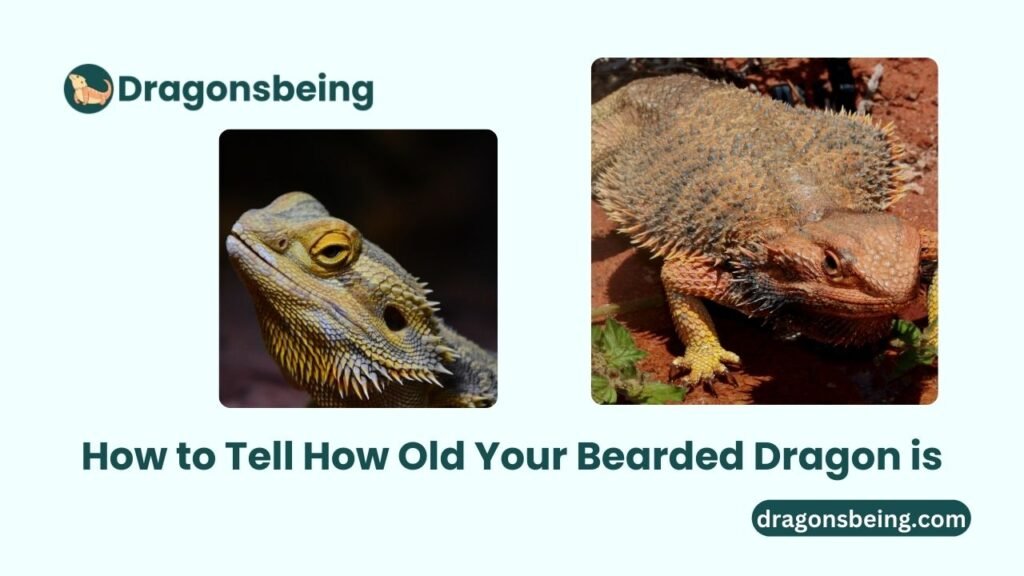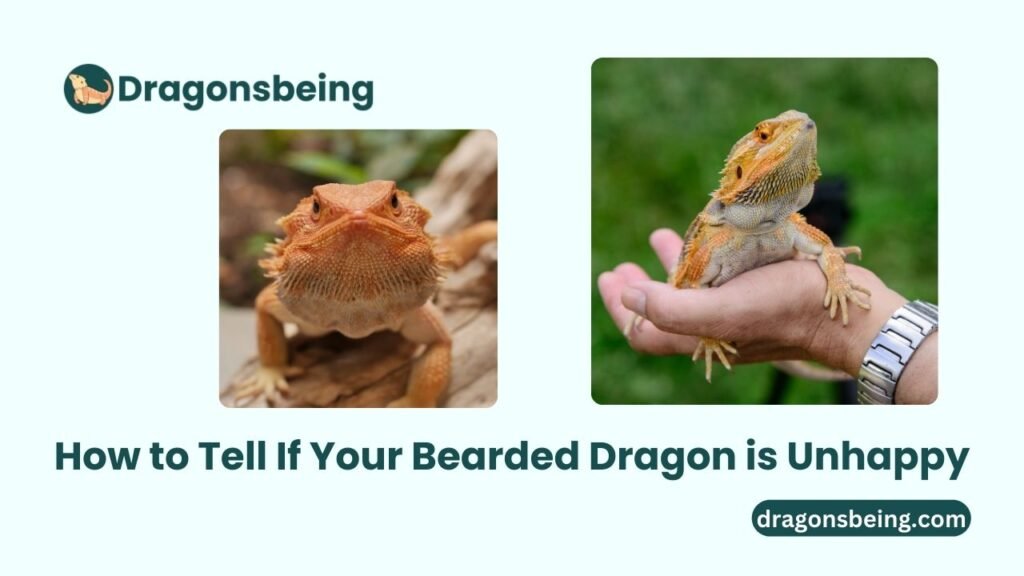For the bottom of a bearded dragon’s cage, use reptile carpet, paper towels, or tile. Avoid sand and loose substrates to prevent impaction.
Creating the ideal habitat for your bearded dragon involves careful consideration of the substrate. The right bottom material can enhance your pet’s health and comfort. Bearded dragons need a clean, safe environment that mimics their natural habitat. Choosing the wrong substrate can lead to health issues, including impaction.
Reptile carpet, paper towels, and tile are popular choices among reptile owners. Each option has its benefits and drawbacks, affecting cleanliness, humidity, and comfort. Understanding these factors helps you make an informed decision. A well-chosen substrate supports your bearded dragon’s well-being and ensures a vibrant, thriving environment.
Introduction To Bearded Dragon Habitats
Creating a proper habitat for your bearded dragon is essential. It affects their health and happiness. A comfortable environment helps them thrive. The right setup mimics their natural habitat.
Creating A Comfortable Environment
A bearded dragon needs a cozy and safe space. Here are key factors to consider:
- Temperature: Maintain a warm basking area.
- Lighting: Provide UVB light for at least 12 hours daily.
- Hiding spots: Include caves or logs for security.
- Humidity: Keep humidity levels low, around 30-40%.
Use a spacious enclosure. A minimum of 40 gallons is recommended. This allows them to move and explore.
Why Substrate Matters
The substrate is the bottom layer of the cage. It impacts your dragon’s comfort and health. Here are options for substrates:
| Substrate Type | Pros | Cons |
|---|---|---|
| Reptile Carpet | Easy to clean, safe | Can retain odors |
| Sand | Natural look, easy to replace | Risk of impaction |
| Tile | Durable, easy to clean | Can be slippery |
| Paper Towels | Inexpensive, easy to change | Less natural appearance |
Choose a substrate that suits your bearded dragon’s needs. Avoid loose substrates to prevent health issues. A clean, safe base enhances their well-being.
Popular Substrate Options
Choosing the right substrate for your bearded dragon’s cage is essential. It impacts their health and comfort. Here are some popular options to consider.
Reptile Carpet
Reptile carpet is a common choice among bearded dragon owners. This material provides a soft surface. It mimics natural habitats, helping your pet feel secure.
- Easy to clean
- Non-toxic
- Reusable
- Available in various colors
Reptile carpet prevents substrate ingestion. This is important for your dragon’s health. Regularly wash it to keep it free from bacteria.
Ceramic Tiles
Ceramic tiles are another excellent substrate option. They are durable and easy to clean. Tiles can regulate temperature well, which benefits your dragon.
- Non-absorbent
- Customizable sizes
- Variety of designs
- Long-lasting
Using ceramic tiles reduces the risk of impaction. They offer a stable surface for basking. Ensure tiles are smooth to avoid injuries.
Natural Substrates And Their Benefits
Choosing the right substrate for a bearded dragon’s cage is essential. Natural substrates offer numerous benefits. They mimic the dragon’s natural habitat. This enhances their comfort and overall health.
Sand
Sand is a popular choice for bearded dragon owners. It creates a natural environment. Here are some benefits of using sand:
- Natural Feel: It resembles their native desert habitat.
- Easy to Clean: Spot cleaning is simple and quick.
- Encourages Digging: Sand allows for natural digging behavior.
However, use caution with sand. Avoid fine sand to prevent ingestion. Coarse sand is safer and encourages natural behaviors.
Excavator Clay
Excavator clay is another excellent substrate option. It is a natural material and has unique benefits:
- Safe for Ingestion: Non-toxic and safe for your dragon.
- Holds Shape: Allows for burrowing and digging.
- Moisture Retention: Helps maintain humidity levels.
Excavator clay is easy to mold. It can create tunnels and caves. This mimics the dragon’s natural environment.
Pros And Cons Of Loose Substrates
Choosing the right substrate for your bearded dragon is essential. Loose substrates can create a natural habitat. However, they come with both benefits and risks. This section highlights the pros and cons of using loose substrates.
Risk Of Impaction
Loose substrates can lead to serious health issues. Impaction occurs when your bearded dragon ingests substrate. This can block their digestive system.
- Signs of impaction include:
- Loss of appetite
- Constipation
- Abdominal swelling
Impaction may require veterinary treatment. It’s crucial to monitor your dragon’s behavior. Avoid using substrates that are too small. Choose larger, safer options.
Encouraging Natural Behaviors
Loose substrates can promote natural behaviors. Bearded dragons enjoy digging and burrowing. This helps them feel more at home.
- Benefits of natural behaviors include:
- Reduced stress levels
- Improved exercise
- Enhanced mental stimulation
Providing a loose substrate can mimic their natural environment. It allows them to explore and express instincts.
Consider using safe options like:
- Reptile carpet
- Play sand
- Organic topsoil
Choose wisely to balance safety and natural behavior.
Easy-to-clean Substrates For Busy Owners
Bearded dragons need clean and safe habitats. Choosing easy-to-clean substrates saves time. This helps busy owners maintain a healthy environment for their pets.
Newspaper
Using newspaper as a substrate is simple. It is cost-effective and easy to find. Here are some benefits:
- Affordable: Newspapers are cheap or free.
- Easy to replace: Just roll up and toss.
- Non-toxic: Safe for your bearded dragon.
- Absorbent: Quickly soaks up spills and waste.
To use newspaper, lay it flat on the bottom of the cage. Change it weekly or as needed. This keeps the habitat clean and fresh.
Paper Towels
Paper towels are another great option. They are super easy to clean and maintain. Here are their advantages:
- Highly absorbent: Quickly absorbs moisture and waste.
- Disposable: Just throw them away after use.
- Soft surface: Gentle on your dragon’s feet.
- No mess: Easy to spot clean daily.
To use paper towels, layer them on the cage floor. Replace them as needed. This keeps your pet’s space tidy.
Combining Substrates For Optimal Results
Choosing the right substrate for a bearded dragon’s cage is crucial. It impacts their health and happiness. Combining different substrates can create a safer, more comfortable environment. This method enhances drainage, prevents impaction, and mimics natural habitats.
Layering Techniques
Layering substrates offers multiple benefits. Here are some effective layering methods:
- Bottom Layer: Use a non-adhesive liner or newspaper. This layer aids in easy cleaning.
- Middle Layer: Add play sand or reptile carpet. This provides a natural feel and allows digging.
- Top Layer: Use coconut fiber or topsoil. This mimics the natural ground and helps with humidity.
Layering creates a diverse environment. It also promotes better drainage and moisture retention.
Mixing Materials
Mixing various materials enhances the substrate’s effectiveness. Here’s how to do it:
- Combine sand and soil. This mix creates a natural texture.
- Blend coconut fiber with topsoil for moisture retention.
- Use gravel as a drainage layer under other substrates.
Here’s a table of popular substrate combinations:
| Combination | Benefits |
|---|---|
| Sand + Soil | Natural texture, encourages digging. |
| Coconut Fiber + Topsoil | Better moisture, maintains humidity. |
| Gravel (Bottom Layer) | Improves drainage, prevents waterlogging. |
Experiment with different mixes to find the best one. Each bearded dragon may have unique preferences.
Safety Tips For Choosing Substrates
Choosing the right substrate for your bearded dragon’s cage is crucial. It impacts their health and comfort. Here are essential tips to keep in mind.
Avoiding Toxic Materials
Some materials can be harmful to your bearded dragon. Avoid these toxic substrates:
- Sand – Fine sand can cause impaction.
- Wood shavings – Cedar and pine are toxic.
- Plastic liners – They can retain heat.
Always check the ingredients and material safety. This ensures your pet’s habitat is safe.
Size Considerations
The size of the substrate matters for your bearded dragon. Use the right type and size to prevent health issues.
| Substrate Type | Size | Benefits |
|---|---|---|
| Reptile carpet | Large pieces | Safe, easy to clean |
| Tile | Custom cut | Durable, non-absorbent |
| Paper towels | Standard size | Inexpensive, easy to replace |
Choose a substrate that is easy for your dragon to navigate. Avoid small particles that can be ingested.
Creating A Bearded Dragon Paradise
A bearded dragon’s habitat should feel like a paradise. This ensures their health and happiness. The right setup keeps them active and stress-free. Choose the right materials for the bottom of their cage. Consider comfort, safety, and ease of cleaning.
Adding Decorations
Decorations make the cage lively and fun. They provide hiding spots and climbing areas. Here are some great options:
- Rocks: Use smooth, safe rocks for basking.
- Branches: Add sturdy branches for climbing.
- Plants: Use non-toxic plants for a natural feel.
- Caves: Include caves for hiding and safety.
Ensure decorations are clean and safe. Check for sharp edges or harmful materials. Arrange them to create space for basking and hiding.
Maintaining Temperature And Humidity
Temperature and humidity are crucial for your bearded dragon. They need a warm basking area and a cooler side.
| Zone | Temperature (°F) | Humidity (%) |
|---|---|---|
| Basking Area | 95-105 | 30-40 |
| Cool Side | 75-85 | 30-40 |
Use a reliable thermometer to monitor temperatures. Mist the cage lightly for humidity. Avoid soaking the substrate, as it can create mold.
Frequently Asked Questions
What Substrate Is Best For Bearded Dragons?
The best substrate includes reptile carpet, paper towels, or sand, depending on your dragon’s age and behavior.
Can I Use Sand In A Bearded Dragon Cage?
Yes, but use it cautiously. Avoid loose sand for young dragons to prevent impaction.
How Often Should I Change The Substrate?
Change the substrate every 1-2 weeks to maintain cleanliness and prevent odors.
Is Newspaper A Good Bedding Option?
Newspaper is an economical, easy-to-clean option that provides a safe environment for your bearded dragon.
Should I Provide Hiding Spots In The Cage?
Yes, hiding spots reduce stress and promote a sense of security for your bearded dragon.
What About Temperature Regulation In The Cage?
Use a basking bulb and a heat mat to ensure proper temperature gradients for your bearded dragon’s health.
Conclusion
Choosing the right substrate for your bearded dragon’s cage is essential for their health and comfort. Options like reptile carpet, paper towels, or sand all have their pros and cons. Always prioritize safety and ease of cleaning. A well-chosen bottom layer will create a happier habitat for your pet.

Hi, I’m Dr. Michelle Mayers, a veterinary professional with a deep passion for animal health and well-being. Over the years, I’ve dedicated my life to caring for animals and helping pet owners better understand their furry, feathered, or scaly companions. On my blog, Dragonsbeing, I share insights, tips, and stories that aim to educate, inspire, and connect with fellow animal lovers. Join me at Dragonsbeing as we explore the fascinating world of veterinary care and celebrate the special bond between humans and animals!


